Oracle PeopleSoft
Perform the following steps to complete the pre-installation process:
- Configuring PeopleCode using the PeopleTools Desktop Client
- Configuring PeopleSoft using the PeopleSoft Web Portal
- Configuring the PeopleSoft Application in SafeNet Trusted Access
Configuring PeopleCode using the PeopleTools Desktop Client
PeopleSoft deployments usually support a given PeopleCode sign-on. PeopleCode is a proprietary object-oriented programming language used to express business logic for PeopleSoft applications. Perform the following steps to update the PeopleCode to accept the header-based authentication from the PeopleSoft_USER header:
-
Open the PeopleTools application designer.
-
Click File > Open > Definition: Record > Name: FUNCLIB_LDAP.
-
Open FUNCLIB_LDAP.
-
Right-click Open and click Cancel.
-
Right-click LDAPAUTH and click View PeopleCode.
-
Search for the getWWWAuthConfig() function.
-
Change &defaultUserId = ""; to &defaultUserId = "PUBLICUSER";.
-
Search for the OAMSSO_AUTHENTICATION() function.
-
Change the header value from OAM_REMOTE_USER to PeopleSoft_USER.
-
Click File.
-
Click Save.
Configuring PeopleSoft using the PeopleSoft Web Portal
Configuring PeopleSoft using the PeopleSoft web portal requires:
- Enabling SSO
- Adding a Default User Profile to PeopleSoft
- Configuring the Web Profile
- Setting-up the Default Proxy Address
Enabling SSO
-
On the PeopleSoft web portal, log in as the PeopleSoft super user.
-
On the main menu, click PeopleTools > Security > Security Objects > Signon PeopleCode.
-
Click the [+] icon.
-
Select the Signon PeopleCode page.
-
Enable the OAMSSO_AUTHENTICATION function.
-
Click Save.
Adding a Default User Profile to PeopleSoft
-
On the main menu, click PeopleTools > Security > User Profiles > User Profiles > Add a New Value.
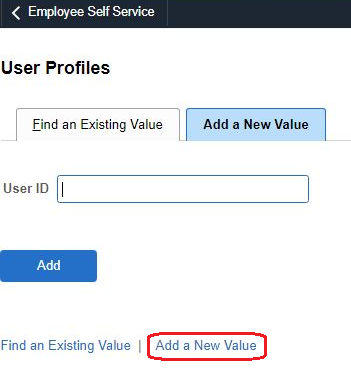
-
Click the General tab and perform the following steps:
-
For the User ID: PUBLICUSER, in the Password field, enter a password.
-
In the Confirm Password field, reenter the password.

-
-
Click the ID tab.
-
In the ID Type field, select None.
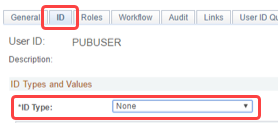
-
Click Save.
Configuring the Web Profile
Perform the following steps to configure the web profile:
-
On the PeopleSoft web portal, on the main menu, click PeopleTools > Web Profile > Web Profile Configuration > Search > PROD > Security.
If the Public Users section is populated, copy the User ID and paste it in a text editor. You will need the User ID while configuring Public Users.
-
Under Main PIA, clear the Use HTTP Same Server check box.
-
Under Public Users, perform the following steps:
-
In the User ID field, enter the users ID (for example, PUBLICUSER) that you copied earlier in Step 1.
The field value must match with the attribute used when creating the Access Gateway.
-
In the Password field, enter the same password that you entered while creating the user.
-
Select the Allow Public Access check box.

-
-
Click Save.
Setting-up the Default Proxy Address
-
On the main menu, click PeopleTools > Web Profile > Web Profile Configuration > Search > PROD > Virtual Addressing.
-
Under Default addressing, perform the following steps:
- In the Protocol field, enter https.
- In the Name field, enter the FQDN of the Access Gateway of the PeopleSoft application public domain (for example, abc-external.example.com).
-
In the Port field, enter 443.
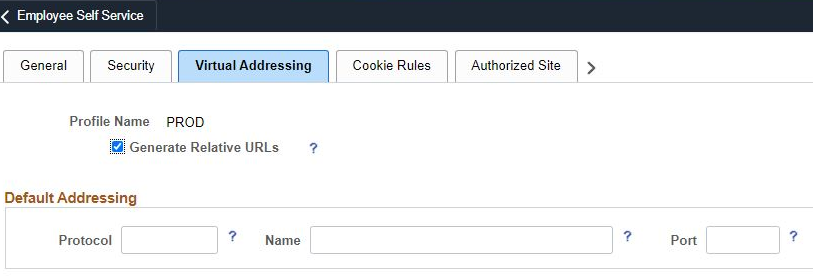
-
Under Public Users, select the Allow Public Access check box.
-
Click Save.
-
Restart PeopleSoft.
Configuring the PeopleSoft Application in SafeNet Trusted Access
-
In the Add Application window, select Oracle PeopleSoft (from the list of available applications) or search for Oracle PeopleSoft.
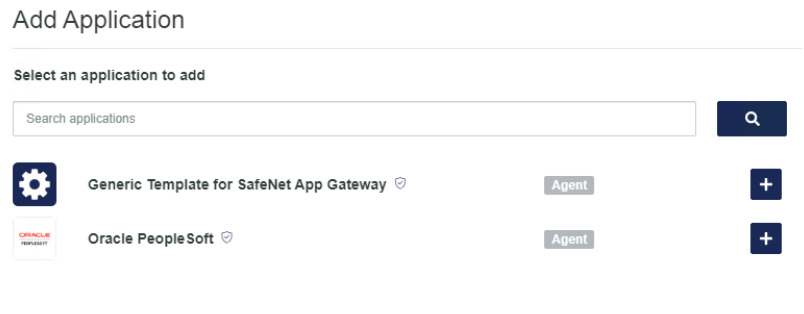
-
Enter a Display Name (any names can be used) for the application, and click Add.
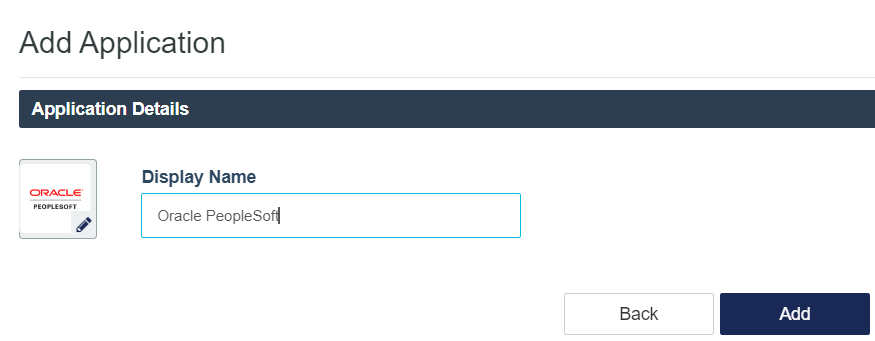
-
Under Application Setup, perform the following steps:
-
In the PUBLIC URI field, enter the link of the PeopleSoft URL that is used to access the PeopleSoft portal directly. For example, in case of https://external-abc.example.com/peoplesoft/, enter peoplesoft/
> The PUBLIC URI must be unique for all the sub applications of the same parent.
> The application name should not start with "/". -
In the INTERNAL URL field, enter the internal server hosting URL of the PeopleSoft application. If the default port is different from 443 and 80, then append the port number in the URL (https://<internalhost>:<portnumber>). For example, https://internal-abc.example.com:8000/
> If Fully Qualified Domain Name (FQDN) is used, Internal URL must be in lower case and should be added in the deployed container's host file (/etc/hosts).
> The Internal URL must be same for all the sub applications of the same parent.
> If the docker container restarts, you need to reenter the FQDN. -
Click Add Attributes to add a header attribute. Additional required parameters can be passed to the protected application in the form of header and cookie.
- From the TYPE drop-down list, select the required option (Header or Cookie).
- In the NAME field, enter the header name (for example, PeopleSoft_USER) that you entered while configuring peoplecode.
- From the VALUE drop-down list, select the header attribute to be mapped with the STA user attributes. Header attribute value represents the login ID of the user on the application and is sent as a part of the authentication process.
- Click
 to delete a particular header attribute.
to delete a particular header attribute. - Click
 to add an additional header attribute.
to add an additional header attribute.
In case of Custom Value, you can enter a value of your choice in the ADDITIONAL INFORMATION field.

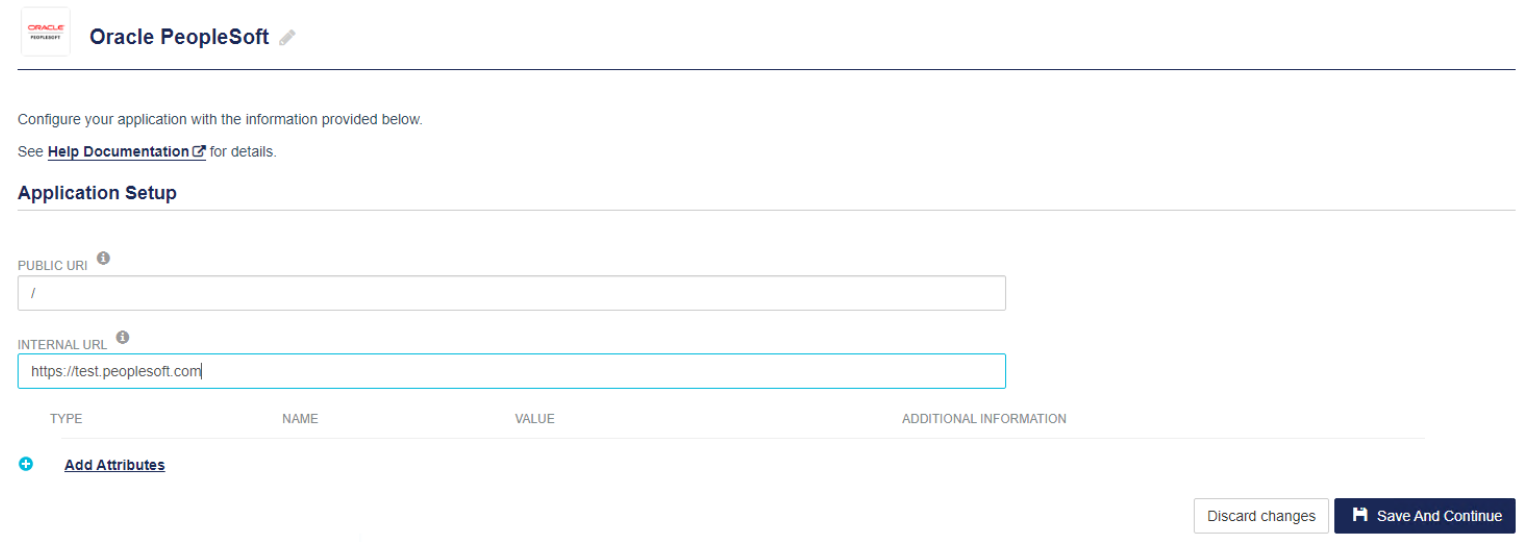
Click Save And Continue.
-

